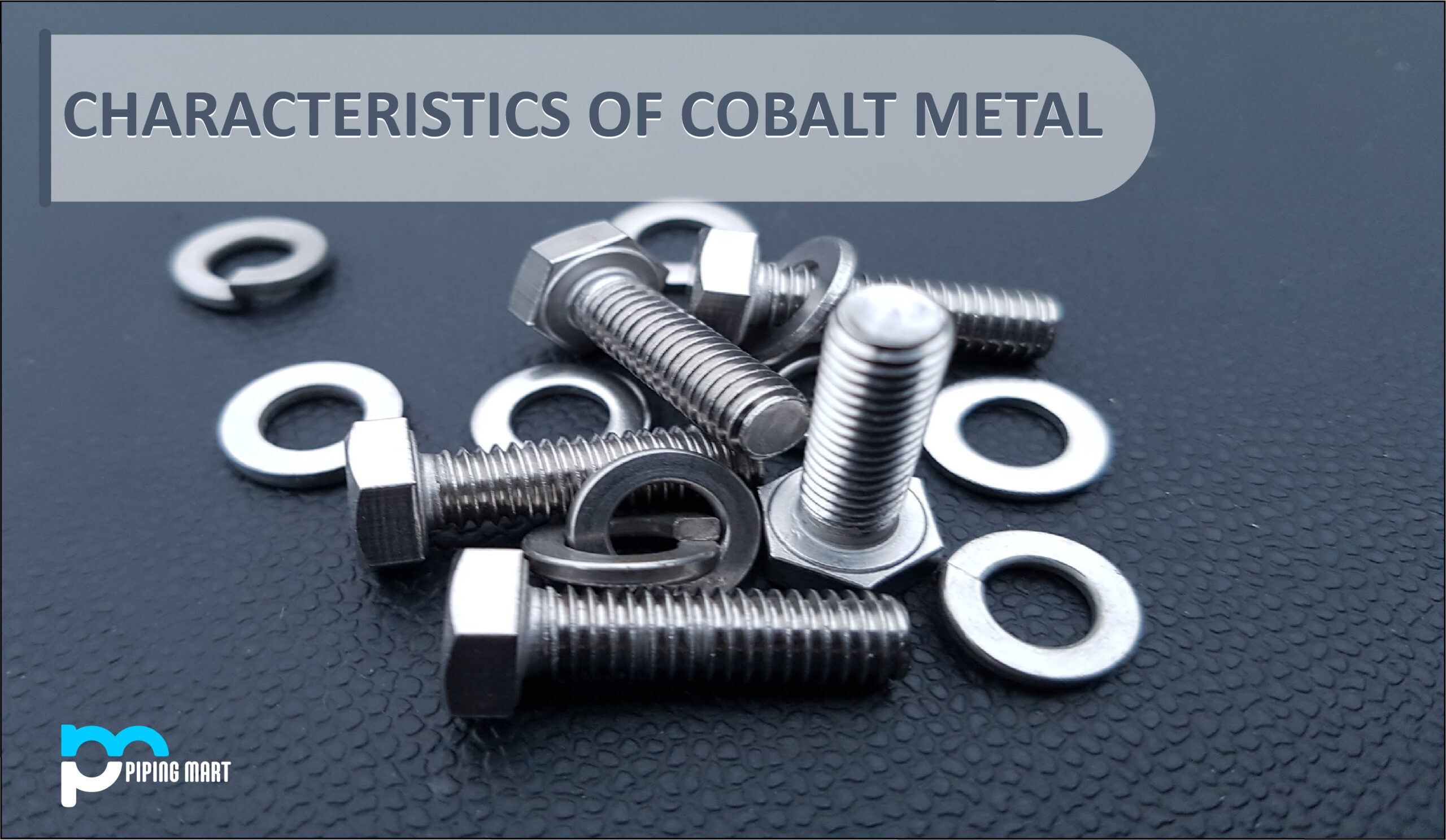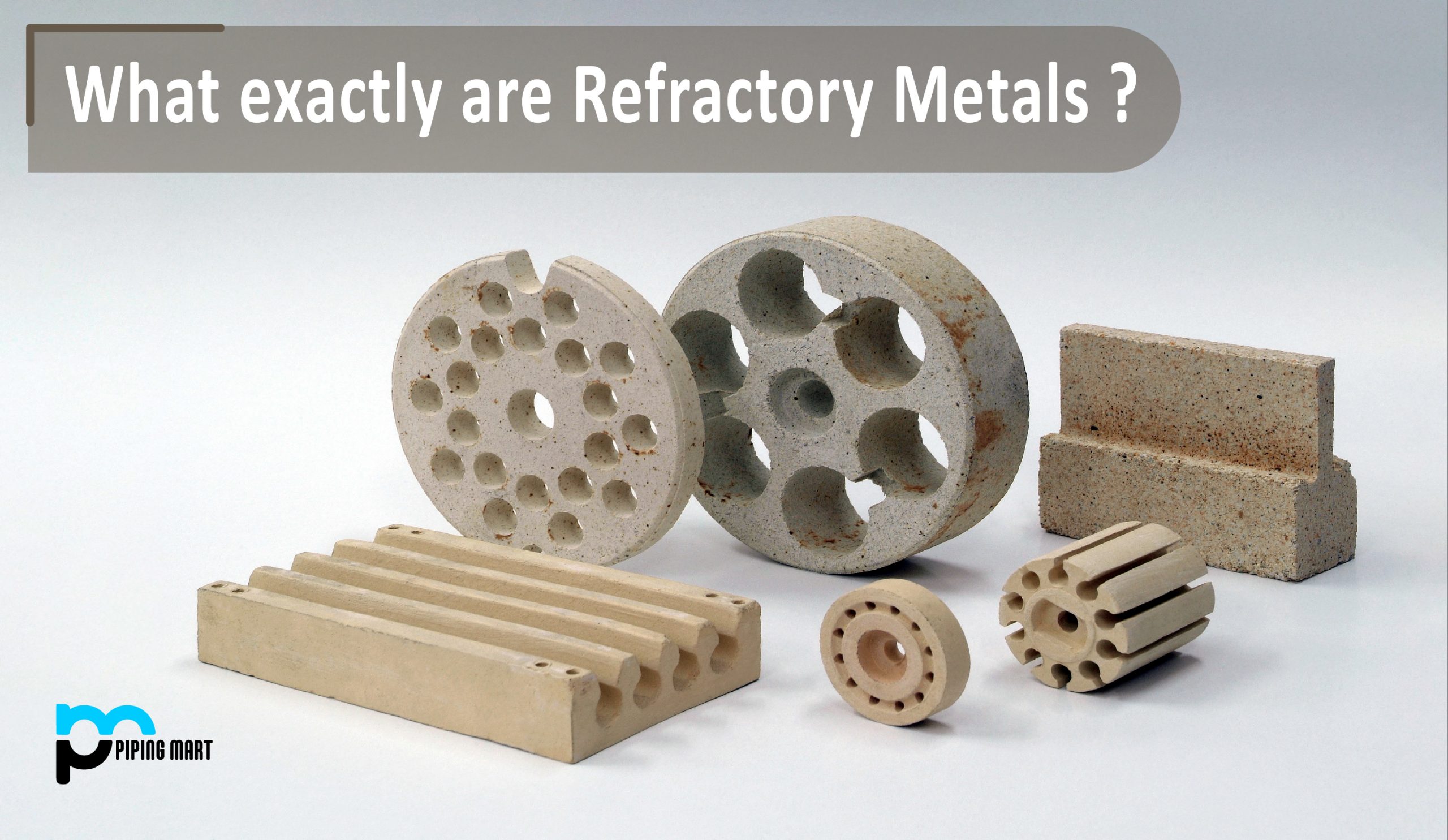What is Cobalt?
Cobalt is an ore that, when properly mined and polished, yields a beautiful, bluish-white metal. In many uses, it is typically mixed with iron to create various alloys. In nature, cobalt (Co) is a rare metal element that makes up 0.001% of the crust of the planet. Cobalt is a brittle, silver-white, hard, ferromagnetic, and glossy element. It belongs to the periodic table’s group VIII. It can be magnetic, just like iron. Its physical characteristics are comparable to those of nickel and iron. Chemically, the element is active, creating several compounds. Cobalt is unaffected by water and stable in air, although weak acids progressively corrode it. It is a member of the periodic table’s first-row transition series and cannot be found naturally in its purest form; rather, it can only be found in combinations with other elements.
Characteristics of Cobalt Metal:
The ferromagnetic metal cobalt is hard but fragile. It has a high melting point and endures well in hot conditions. It has excellent conduction qualities and a high strength. Cobalt’s main characteristics are listed below:
Its sign is “Co.” Its Atomic Weight is 27. Nuclear mass is noted to be 58.93 g/mol. The Classification includes Crystallized Transition Metal Hexagonal close-packed structure. 1493°C (2719°F) is the melting point. Boiling Point is recorded at 5612°F or 2870°C. 8.85 g/cm3 is denoted for its density. At temperatures below 417 °C (783 °F), it exhibits a hexagonal closed pack crystal structure and contains 12 radioactive isotopes. Cobalt-60, which has a half-life of 5.3 years and is frequently employed in medicinal applications, is the most common.
Cobalt, in general, is a silver-white with a slightly blue hue, polished metal. There are two known allotropes: the face-centered cubic, which is stable at high temperatures, and the hexagonal close-packed structure, which is stable below 417 °C (783 °F). It can be used in situations where magnetic qualities are required at high temperatures since it is ferromagnetic up to 1,121 °C (2,050 °F), which is the highest known Curie point of any metal or alloy.
One of the three metals that exhibit ferromagnetism at normal temperature is cobalt. It slowly dissolves in weak mineral acids, does not interact with hydrogen or nitrogen immediately, but will combine with carbon, phosphorus, or sulfur when heated. At high temperatures, oxygen and water vapor also attack cobalt, causing cobaltous oxide, or CoO (in the +2 state with the metal), to be created.
The longest-lived manmade radioactive isotope, cobalt-60 (with a half-life of 5.3 years), is created by neutron irradiation in a nuclear reactor from the stable isotope cobalt-59, which makes up all naturally occurring cobalt. X-rays and radium alpha rays have been replaced with cobalt-60 gamma radiation in the inspection of industrial materials to identify interior structures, defects, or foreign items. Additionally, it has been employed as a radioactive tracer in biology and industry, sterilization research, and cancer therapy.
Special alloys are where most of the cobalt produced is used. Magnetic alloys, including Alnicos for permanent magnets, account for a sizable portion of global production.
Large volumes are employed for superalloys that are used close to their melting points and alloys that maintain their characteristics at high temperatures (where steels would become too soft). Hard-facing alloys, tool steels, low-expansion alloys (for glass-to-metal sealing), and constant-modulus (elastic) alloys are further applications for cobalt (for precision hairsprings). The most effective matrix for cemented carbides is cobalt.
Cobalt that has been finely split ignites naturally. Larger chunks are rather inert in air, although substantial oxidation happens above 300 °C (570 °F).
Cobalt Compounds:
Although states of +4, +1, 0, and 1 are known, cobalt almost invariably exhibits a +2 or +3 oxidation state in its compounds. Cobaltous compounds are those in which cobalt displays the +2 oxidation state (Co2+, the ion being stable in water), whereas cobaltic compounds are those in which cobalt displays the +3 oxidation state (Co3+).
Numerous coordination compounds, or complexes, are formed by both Co2+ and Co3+. Co3+ is the metal that produces the most known complex ions, next to platinum. The complexes typically have a coordination number of six.
Cobalt and oxygen combine to generate the two distinct binary chemicals cobaltous oxide (CoO) and tricobalt tetroxide (Co3O4), sometimes known as cobalto-cobaltic oxide.
The latter, which makes up to 40% of the commercial cobalt oxide used in the production of ceramics, glass, and enamel as well as catalysts and cobalt metal powder, comprises cobalt in both +2 and +3 oxidation states.
The sulfate of cobalt, CoSO4, is one of the more significant cobalt salts and is used in agriculture for pasture top-dressing, electroplating, and the creation of drying agents. In the creation of catalysts, driers, cobalt metal powders, and other salts, other cobaltous salts play a vital role. Cobaltous chloride, a pink solid that dehydrates to turn blue, is used to prepare catalysts and as a humidity gauge. Its commercial form is CoCl26H2O. Co3(PO4)28H2O, a cobaltous phosphate, is used to color glass and paint porcelain.
Applications of Cobalt Metal:
Cobalt was found to be very useful. The 1940s saw the invention of aluminum-nickel-cobalt (AlNiCo) magnets, which was an important advance for cobalt. Electromagnets were originally replaced with AlNiCo magnets. The invention of samarium-cobalt magnets, which offered hitherto impossible magnet energy densities, further revolutionised the industry in 1970.
Cobalt is used in a variety of alloys, including superalloys for gas turbine aircraft engine components, corrosion-resistant alloys, high-speed steels, and cemented carbides. It is also used in magnets and magnetic recording media, as well as in catalysts for the petroleum and chemical industries and as a drying agent in paints and inks. The colour cobalt blue is a significant component of the palettes of artists and is used by artisans to create porcelain, pottery, stained glass, tiles, and enamel jewellery. Cobalt-60 is a radioactive isotope that is used in food irradiation and medicinal treatments to protect patients and preserve food.
Cobalt has a wide range of industrial, business, and military uses. Some of its typical applications are listed below:
- Superalloys: Superalloys based on cobalt can be used to create high-temperature resistant components for rocket motors, spacecraft, gas turbine aircraft engines, and other aerospace applications. Superalloys based on cobalt have a melting point that is higher than that of iron or nickel and exhibit outstanding hot corrosion and thermal fatigue resistance. This superalloy’s weldability is also superior to nickel superalloys’. Overall, cobalt-based superalloys perform remarkably well in situations with low stress and high temperatures.
- Alloys of high-speed steel: High-speed steel is a variety that comes in the usual grades M-35 and M-42. Due to its high red hardness, which also offers strong heat resistance, it is the perfect cutting tool. High feed rates and quicker speeds can be operated and tolerated by cobaltic high-speed steel.
- Magnetic Alloys: Cobalt is frequently used as one of the metals required to make hard permanent magnets with high coercivity, such as the series of alloys made of aluminum, nickel, and cobalt (Al-Ni-Co). Hard drives, sensors, and motors all require alnico magnets. These magnetic alloys have several uses, such as in magnetic resonance imaging.
Many electrochemical systems, such as rechargeable batteries, that transform chemical energy into electrical energy use cobalt oxide, hydroxide, and metal components. Rechargeable batteries are used in all portable devices, including electric cars, laptops, mobile phones, and other consumer electronics. The cathode technology, which is necessary for recharging batteries, uses cobalt as a raw element.
Many industrial processes use cobalt as a catalyst, such as the process of eliminating sulphur atoms from petroleum and natural gas products. Desulfurization of fuel oils such as kerosene, diesel, and gasoline helps to lower emissions. In addition to lowering emissions, the element acts as a catalyst by activating the energy needed for industrial activities like recycling plastic.
Ceramics are decorated with cobalt pigments, which can also be used to colour or decolorize glass to get certain colours. It is used to produce a brilliant blue colour in enamelware, glass, porcelain, paints, and inks. Due to its special solubility, stability, and coloring effect qualities, cobalt has been discovered to be irreplaceable as a coloring agent in various applications.
Where is Cobalt Found?
Despite being extensively distributed, cobalt barely amounts to about 0.001% of the Earth’s crust. In the crust of the Earth and in natural waterways, where it is precipitated as the very insoluble cobalt sulfine CoS, cobalt is relatively rare.
Despite the fact that the average soil cobalt content is 8 ppm, some soils have as little as 0.1 ppm and others as high as 70 ppm. Blue-green algae (cyanobacteria) and other nitrogen-fixing organisms in the maritime environment need cobalt. Cobalt is typically found in the form of ores rather than as a free metal. Cobalt is often extracted as a byproduct of the mining of nickel and copper rather than being mined separately. Cobaltite, erythrite, glaucodot, and skutterudite are the primary cobalt ores. The Democratic Republic of the Congo, China’s mainland, Zambia, Russia, and Australia are the world’s top cobalt producers. Finland, Azerbaijan, and Kazakhstan are also home to it. The annual global production is 17,000 tonnes.
It can also be found in combination with other elements in natural waters, ferromanganese crusts deep in the oceans, soils, plants, and animals, as well as in minerals like cobaltite, linnaeite, skutterudite, smaltite, heterogeneity, and erythrite. It can also be found in small amounts in native nickel-iron on Earth and in meteorites. With the exception of vitamin B12, which is the only vitamin known to include such a heavy element, cobalt is a trace element found in animals that is crucial for the nutrition of ruminants (cattle, sheep), as well as for the development of human red blood cells.
Cobalt ore is rarely mined for its cobalt content, with few exceptions. Instead, it is frequently extracted as a byproduct from the mining of cobalt-containing iron, nickel, copper, silver, manganese, zinc, and arsenic ores. Concentrating and extracting cobalt from these ores calls for intricate processing. The Democratic Republic of the Congo (DRC), China, Canada, and Russia were the world’s top producers of mined cobalt by the second decade of the twenty-first century. However, China was the greatest producer of refined cobalt, importing significant amounts of extra cobalt mineral resources from the DRC.
Health Benefits of Cobalt:
Humans may be exposed to cobalt through breathing air, drinking water, or eating food that contains the metal because it is extensively distributed in the environment. Cobalt exposure may also be increased by skin contact with cobalt-containing soil or water.
Cobalt isn’t frequently readily available in the environment, but when it is, plants and animals are more likely to absorb it, and buildup in plants and animals is possible.
Because it is a component of vitamin B12, which is vital for human health, cobalt is advantageous for humans. Due to the fact that cobalt stimulates the creation of red blood cells, it is used to treat anaemia in pregnant women. Cobalt intake varies and can reach 1 mg per day, but practically all of it, with the exception of the cobalt found in vitamin B12, will pass through the body without being absorbed.
However, cobalt levels that are too high can harm people’s health. Individuals encounter lung consequences, such as asthma and pneumonia, when they breathe in too much cobalt through the air. This mostly happens to cobalt-related workers.
Very minute cobalt particles build up in plants that are grown on contaminated soil, especially in the portions of the plant that was consume, such as the fruits and seeds. When consumed by humans through eating plants, cobalt can have negative health effects because it can be found in very high concentrations in the soils surrounding mining and melting facilities.
The following health consequences of ingesting excessive cobalt concentrations:
– Nausea and vomiting – Vision issues
– Heart issues
– Thyroid ailment
Radiation from radioactive cobalt isotopes may potentially harm health. In addition to mortality, this can result in unconsciousness, hair loss, vomiting, bleeding, diarrhea, and sterility. Patients with cancer may occasionally receive this radiation to eliminate tumours. Additionally, many people have vomiting, diarrhea, and hair loss.
Cobalt dust may result in an illness resembling asthma, with signs and symptoms ranging from coughing, breathlessness, and dyspnea to deteriorated pulmonary function, nodular fibrosis, permanent impairment, and even death. Weight loss, rashes, and respiratory hypersensitivity may result from cobalt exposure. Rat oral LD50: 6171 mg/kg. (LD50 = Lethal dose 50 = Single exposure to a drug by any means other than inhalation that results in the death of 50% of an animal population. LD50 is often stated in milligrammes (mg/kg) or grammes (g/kg) of substance per kilogramme of animal weight.
Cobalt and cobalt compounds are included in group 2B by the International Agency for Research on Cancer (IARC) due to their carcinogenicity (agents which are possibly carcinogenic to humans).
Cobalt and inorganic compounds have been classified by the ACGIH as being in category A3 (Experimental animal carcinogen), which means that the agent is carcinogenic in experimental animals at relatively high doses, by route(s), histologic type(s), or by mechanism(s) not thought to be relevant to worker exposure. Germany’s Federal Republic has determined that cobalt causes cancer in test animals.
Environmental effects of Cobalt:
A naturally occurring element, cobalt can be found in air, water, soil, rocks, plants, and animals. Additionally, it may be carried by wind-blown dust into the air and water, settle on the land, and enter surface water by runoff when rainfall passes through cobalt-containing soil and rock.
Small amounts of cobalt are released into the atmosphere by humans as a result of coal combustion, mining, processing cobalt-containing ores, and creating and using cobalt-containing compounds. The radioactive isotopes of cobalt are not found in nature; rather, they are emitted during the operation of nuclear power plants and during nuclear accidents. They are not very harmful because of their limited half-lives.
Once in the environment, cobalt cannot be destroyed. It might interact with different particles or adhere to water or soil sediments. The majority of cobalt will eventually end up in soils and sediments, and it will only mobilize in acidic environments.
Plants with a cobalt shortage may grow on soils with very low levels of cobalt. Animals that graze in these fields experience nutritional deficiencies since cobalt is a mineral that they require.
On the other side, soils close to mine and smelting operations may contain extremely high levels of cobalt, making it possible for animals to become ill from ingesting plants. Cobalt will build up in the bodies of animals that consume these plants and in the plants themselves, but it is not known to biomagnify up the food chain.
As a result of this, the levels of cobalt in the fruits, vegetables, fish, and other animals are often quite low.
Processing and production of Cobalt:
Cobalt often occurs in nature as the mineral cobaltite, smaltite, and erythrite. It is frequently acquired as a byproduct of the mining of iron ore, nickel, silver, lead, copper, and other metals. Solvent extraction can be used to remove cobalt. At 525 °C, carbon monoxide reduces the laterite ore in a process. This transforms cobalt and copper into metallic states and decreases nickel and iron to ferronickel. Then, to solubilize nickel, copper, and cobalt, the minerals are leached using a solution of 100 g/L ammonium hydroxide (NH4OH) and 300 g/L (NH4)2SO4 in a controlled oxidation leach.
The extraction process used to produce refined cobalt metal depends on whether the feed material is in the form of (1) copper-cobalt sulfide ore, (2) cobalt-nickel sulfide concentrate, (3) arsenide ore, or (4) nickel-laterite ore:
– Cobalt and other contaminants are left on the used electrolyte when cobalt-containing copper sulfides are converted into copper cathodes. Lime is used to eliminate impurities (iron, nickel, copper, and zinc), and cobalt is precipitated in its hydroxide form. Pure, industrial-grade cobalt metal can then be created from this by electrolysis, followed by crushing and degassing.
– The Sherritt method, which was developed by the famous Sherritt Gordon Mines Ltd., is used to convert nickel sulfide ores that include cobalt. This procedure involves pressure leaching a sulfide concentrate with less than 1% cobalt at high temperatures in an ammonia solution. In a series of chemical reduction operations, copper and nickel are both eliminated, leaving just nickel and cobalt sulfides. Prior to adding cobalt powder as a seed to precipitate cobalt in a hydrogen gas environment, pressure leaching with air, sulfuric acid, and ammonia recover additional nickel.
– The majority of the arsenic oxide is removed by roasting the arsenide ores. The ores are subsequently processed with sulfuric acid, hydrochloric acid, and chlorine to produce a pure leach solution. Cobalt is extracted from this by electrorefining or carbonate precipitation.
– It is possible to melt and separate nickel-cobalt laterite ores using pyrometallurgical methods or hydrometallurgical methods, which employ sulfuric acid or ammonia leach solutions.

Pipingmart is B2B portal specializes in industrial, metal and piping products. Also, share latest information and news related to products, materials and different types grades to help business dealing in this industry.




